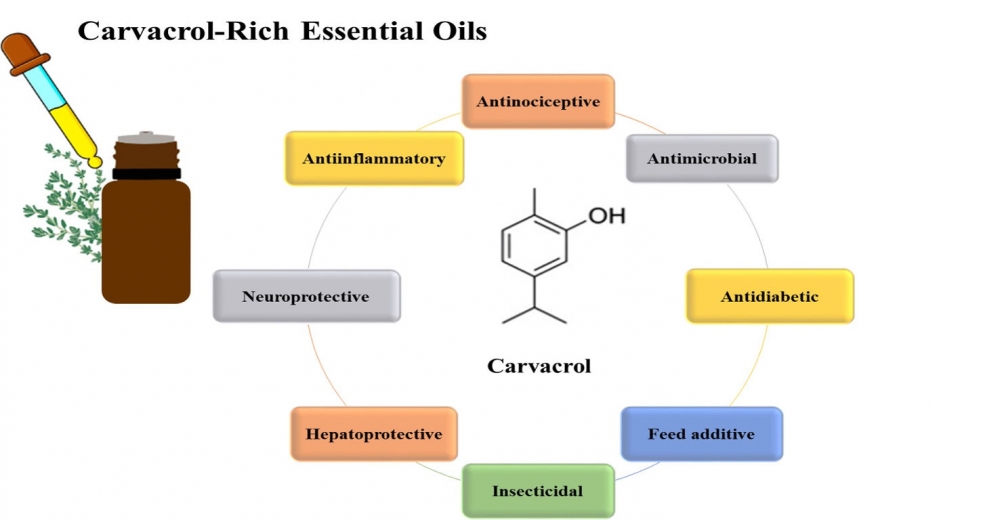JOURNAL 3428
Records of Natural Products
Year: 2025 Issue: Special Issue:Lamiaceae Family: Phytochemistry, Pharmacology, Ethnopaharmacology, Ethnobotany and as Food Soruce
p.308 - 349
Viewed 30 times.
GRAPHICAL ABSTRACT

ABSTRACT
Carvacrol, a monoterpenic phenol found abundantly in essential oils of Origanum, Thymus, Satureja, Thymbra and Lippia genera, is recognized for its extensive range of biological and pharmacological activities. This bioactive compound, primarily responsible for the health-promoting properties of oregano essential oil, exhibits diverse functionalities including antimicrobial, antitumor, antimutagenic, analgesic, anti-inflammatory, antioxidant, and neuroprotective effects. Its therapeutic applications extend to managing gastrointestinal ailments, reducing oxidative stress, and serving as an insecticidal agent. Furthermore, carvacrol has demonstrated potential as a feed additive and in honeybee breeding. Advances in encapsulation and nanotechnology have enhanced its stability and bioavailability, broadening its utility across food, pharmaceutical, and agricultural industries. This review synthesizes the evidence for carvacrol's biological activities and explores its possible in vivo mechanisms of action, emphasizing its promise as a natural therapeutic agent.
KEYWORDS- Oregano
- monoterpenic phenol
- biological activity
- carvacrol